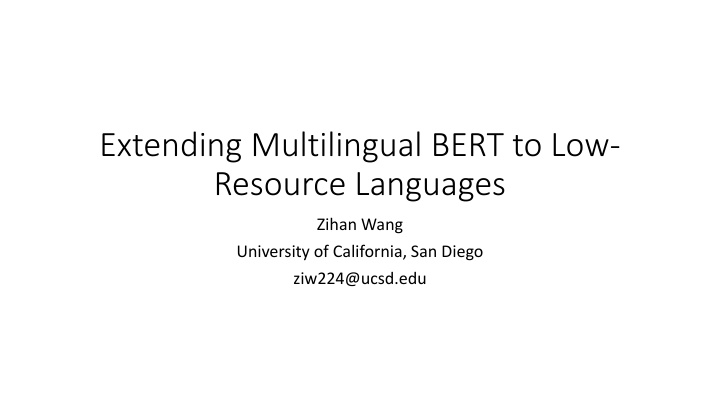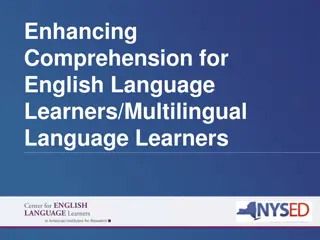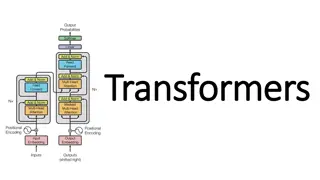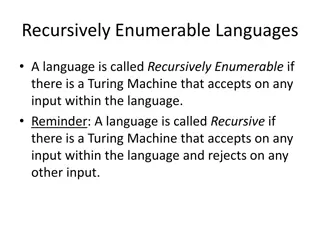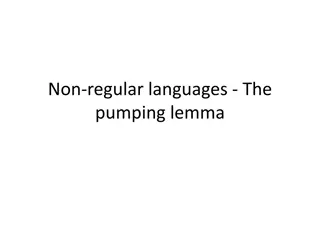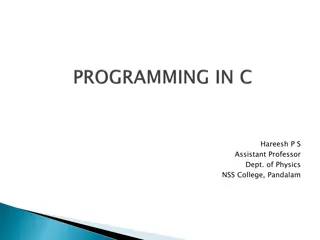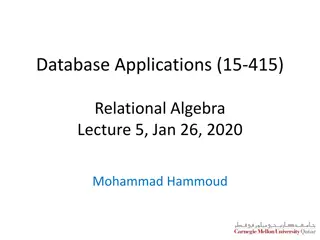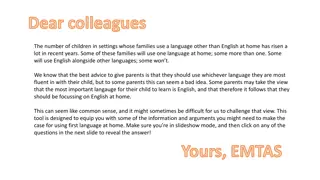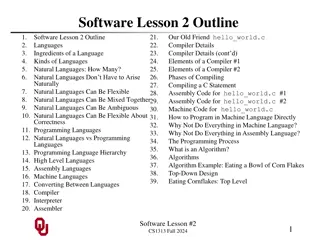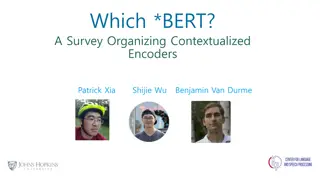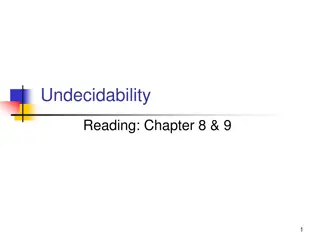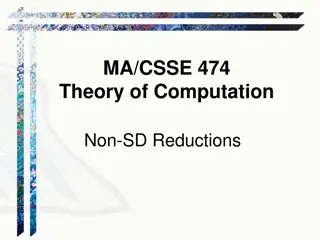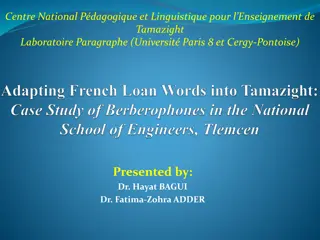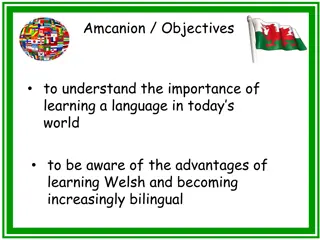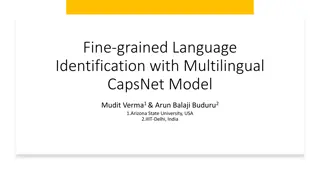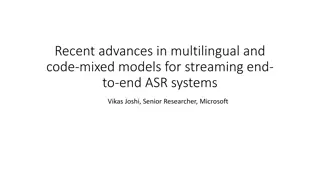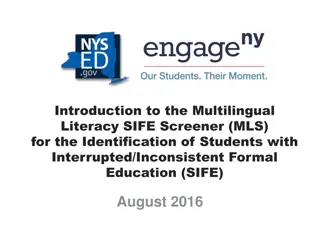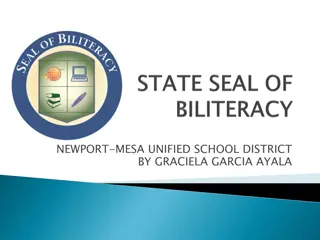Extending Multilingual BERT to Low-Resource Languages
This study focuses on extending Multilingual BERT to low-resource languages through cross-lingual zero-shot transfer. It addresses the challenges of limited annotations and the absence of language models for low-resource languages. By proposing methods for knowledge transfer and vocabulary accommodation, the study demonstrates improved performance in cross-lingual Named Entity Recognition. Experiment results indicate the effectiveness of the proposed approach in enhancing language understanding for both trained and untrained languages.
Download Presentation

Please find below an Image/Link to download the presentation.
The content on the website is provided AS IS for your information and personal use only. It may not be sold, licensed, or shared on other websites without obtaining consent from the author.If you encounter any issues during the download, it is possible that the publisher has removed the file from their server.
You are allowed to download the files provided on this website for personal or commercial use, subject to the condition that they are used lawfully. All files are the property of their respective owners.
The content on the website is provided AS IS for your information and personal use only. It may not be sold, licensed, or shared on other websites without obtaining consent from the author.
E N D
Presentation Transcript
Extending Multilingual BERT to Low- Resource Languages Zihan Wang University of California, San Diego ziw224@ucsd.edu
Content Task: Cross-lingual Zero-shot Transfer Our method Extend Experiments and ablation studies Related works Conclusion and future work
Limited Annotations It is hard to obtain annotations for low resource languages. A widely used approach is to transfer knowledge from high-resource languages (Source) to low-resource languages (LRL, Target). [Jim]Personbought 300 shares of [Acme Corp.]Organizationin [2006]Time. Source supervision: ( Futbol Club Barcelona) Target :
Problem setup Cross-lingual Zero-shot Transfer Requires supervision only on Source Language. Language adversarial training Domain adaption Pre-trained language models make things easy Bilingual sup. en de zh es fr it ja ru Average Schewenk and Li (2018) Dictionary 92.2 81.2 74.7 72.5 72.4 69.4 67.6 60.8 73.9 Artetxe and Schwenk (2018) Parallel text 89.9 84.8 71.9 77.3 78.0 69.4 60.3 67.8 74.9 M-BERT / 94.2 80.2 76.9 72.6 72.6 68.9 56.5 73.7 74.5 [Beto, Bentz, Becas: The Surprising Cross-Lingual Effectiveness of BERT: Wu et al. 19]
Problem: No Language Model for LRLs There are a lot of low resource languages in the world! About 4,000 with a developed writing system. Multilingual models typically cover the top-100 languages. Model # languages Data source How to apply M-BERT to languages not pretrained on? Use it, hope for overlapping word-pieces Retrain a Multilingual (Bilingual) BERT Extend M-BERT to the Target LRL. M-BERT 104 Wikipedia XLM 100 Wikipedia XLM-R 100 Common Crawl (CCNet) mBART 25 Common Crawl (CC25) MARGE 26 Wikipedia or CC-News mT5 101 Common Crawl (mC4) [mT5 paper: Xue et al. 20]
Our Solution: Extend Easy to obtain Continue the pretraining task on the target language with raw text. Accommodate for new vocabulary Simple but effective method Improved performance on both languages in M-BERT and out of M-BERT for cross-lingual NER. Average performance on NER 80 70 60 Performance (F1) 50 In M-BERT: 16 languages that are in the 104 training languages of M-BERT Out of M-BERT: 11 low resource languages that M-BERT was not trained on 40 30 20 10 0 In M-BERT Out of M-BERT M-BERT_supervised M-BERT zeroshot E-MBERT zeroshot
Experiment Setting Dataset: NER corpus from LORELEI. NER Model: Bi-LSTM-CRF from AllenNLP. Representations from language model are fixed (i.e., not finetuned) Performance averaged over 5 runs. BERT training: When extending, batch size 32, learning rate 2e-5, 500k iterations. When training from scratch, batch size 32, learning rate 1e-4, 2M iterations.
Languages in M-BERT Languages in M-BERT 100 90 80 70 60 50 40 30 20 10 0 M-BERT supervised M-BERT zeroshot E-MBERT zeroshot About 6% F1 increase on average for 16 languages that appears in M-BERT
Languages out of M-BERT Languages out of M-BERT 100 90 80 70 60 50 40 30 20 10 0 Uyghur Amharic Zulu Somali Akan Hausa Sinhala Wolof Kinyarwanda Tigrinya Oromo avg M-BERT supervised M-BERT zeroshot E-MBERT zeroshot About 23% F1 increase on average for 11 languages that are out of M-BERT
Ablation on Extend Performance on languages in M-BERT: 50.7 -> 56.6 Where could the improvement come from? Additional data used for training Additional vocabulary created More focused training on the target language by Extend.
Impact of extra data Instead of using LORELEI data to extend, we use Wikipedia data that M-BERT is trained on. Whether using Wiki data or LORELEI data doesn t affect the performance much. Language M-BERT Extend w/ Wiki data Extend w/ LORELEI data Russian 56.56 55.70 56.64 Thai 22.46 40.99 38.35 Hindi 48.31 62.72 62.77
Impact of vocabulary increase Including extra vocabulary is important for low-resource languages (zul, uig), since there might be word-pieces that doesn t exist in M- BERT s vocab Still brings improvements to in M-BERT languages: M-BERT s vocab might not be enough. Improvements on hin, tha and uig are significant without increase. M-BERT Increase vocab: 0 5,000 10,000 20,000 30,000 (default) hin 48.31 57.44 62.58 61.76 60.27 62.72 tha 22.46 41.00 52.22 46.39 45.12 40.99 zul 15.82 19.21 44.28 44.18 44.41 39.65 uig 3.59 34.05 41.19 41.47 41.21 42.98
Extends the performance on M-BERT On languages both out of M-BERT, and in M-BERT. Increasing vocabulary is very useful, especially for low resource languages. Even without expanding the vocab, improvements still exist. Focusing on the target language is useful. Can also train a Bilingual BERT on Source and Target. Appropriate super-sampling and sub-sampling is applied. Can expect that retraining costs more time.
Performance against Bilingual BERT To transfer from English to a Low resource language, we can always train a Bilingual BERT on the two languages. Low resource language Bilingual BERT Extended Multilingual BERT Uyghur 21.94 42.98 Amharic 38.66 43.70 Zulu 44.08 39.65 Somali 51.18 53.63 Akan 48.00 49.02 Average 31.70 33.97 About 2% F1 increase on average for 11 low resource languages
E-MBERT is superior to training B-BERT In both performance and convergence Why? Better on Source Language (English)? No clear advantage on understanding on English On English NER, E-MBERT: 76.78, B-BERT: 79.60 Better on Source -> Target Learning ? Likely true The extra languages in M-BERT might be helping to transfer.
Cross-Lingual Ability of Multilingual BERT: An Empirical Study Why multilingual BERT works? Language similarity: Is word-piece overlap important? No. Is word-order important? Yes. Is word-frequency enough? No. Model structure: Which is more important, depth or width? Depth.
X-Class: Text Classification with Extremely Weak Supervision Using only the class name as supervision. Estimating class-oriented representations -> Clustering -> Training. Rivals and outperforms models that require expert given seed-words.
Conclusions and Future Work Extend: a simple but effective method that can be applied on Multilingual BERT for Cross-Lingual Transfer Learning. Improves over languages in and out of M- BERT. Superior than training a Bilingual BERT from scratch Cross-Lingual Ability of Multilingual BERT: An Empirical Study Why M-BERT works? Word-piece overlap is not the key https://github.com/CogComp/mbert-study X-Class: Text Classification with Extremely Weak Supervision The class names themselves as only supervision Representation learning -> Clustering -> Training More careful design for vocabulary. Account for multiple languages. https://github.com/ZihanWangKi/XClass https://github.com/ZihanWangKi/extend_bert Thanks for listening. Any Questions?
